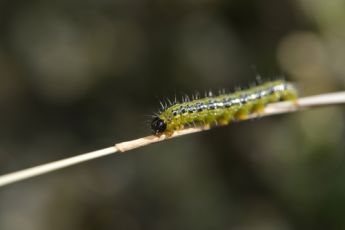
Box caterpillars have knocked slugs and snails off their number one spot as the most reported plant pest in 2017 according to the Royal Horticultural Society’s annual league table of the most troublesome problems gardeners face.
The caterpillar is increasingly common in London and the Home Counties, and feeds on the leaves of box from within a protective webbing, causing severe defoliation. The fungal disease box blight also took 5th place in the diseases table, while another disease affecting box, Volutella blight, which also causes twig and leaf death, was next most common at 6th.
However, the RHS says that the signs are blight may be on the retreat as gardeners become more aware of how to manage it and breeders come up with resistant varieties. Many gardeners are also opting for alternatives to box such as shrubby honeysuckle (Lonicera nitida) which don’t suffer from the disease.
Honey fungus kept its top spot in the disease table for the 22nd year running, attacking a numerous and diverse group of plants including roses, rhododendrons, cherries and plums. The RHS is currently undertaking research to help gardeners better manage the disease.
Other pests to look out for include fuchsia gall mite, a microscopic mite which causes the shoots and flowers of fuchsias to distort. It only arrived in the UK in 2007 but has already claimed second place in the pests top ten.
“With new pests and diseases emerging in continental Europe it has never been more important that people get to grips with what is going on in their gardens,” said RHS Head of Plant Health Gerard Clover.
Luckily here at the garden centre in Henley on Thames you can find all the advice you need about tackling pests and diseases, so pop in this week and we’ll be happy to help you keep your plants happy and healthy all season long.

